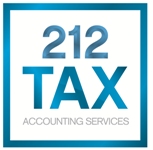Eligibility for Retirement Benefits
When you work and pay Social Security taxes (referred to as FICA on some pay stubs), you earn Social Security credits. Most people earn a maximum of four credits per year. In 2016, you must earn $1,260 in covered earnings to get one Social Security or Medicare work credit ($5,040 to get the maximum four credits for the year). The number of credits you need to get retirement benefits depends on your date of birth. If you were born in 1929 or later, you need 40 credits (10 years of work). People born before 1929 need fewer than 40 credits (39 credits if born in 1928, 38 credits if born in 1927, etc.).
If you stop working before you have enough credits to qualify for benefits, your credits will remain on your Social Security record. If you return to work, later on, you can then add credits so that you may qualify. No retirement benefits can be paid until you have the required number of credits.
If you are like most people, however, you will earn many more credits than you need to qualify for Social Security. While these extra credits do not increase your Social Security benefit, the income you earn while working will increase your benefit.
Amount of Your Retirement Benefits
Your benefit amount is based on your earnings averaged over most of your working career. Higher lifetime earnings result in higher benefits. If you have some years of no earnings or low earnings, your benefit amount may be lower than if you had worked steadily.
Your benefit amount is also affected by your age at the time you start receiving benefits. Your benefit will be lower if you start your retirement benefits at age 62 (the earliest possible retirement age) than if you wait until a later age.
Planning Aid: Social Security will give you a personalized benefit estimate at your request. Call 800-772-1213 and ask for a Request for Earnings and Benefit Estimate Statement. Upon completion and return of the form, you will receive a statement of your complete earnings history along with estimates of your benefits for early retirement, full retirement, and delayed retirement (discussed below). You’ll also receive an estimate of the disability benefits you could receive as well as the amount of benefits payable to your spouse and children due to your retirement, disability, or death. If you are age 60 or older, you can get an estimate of your retirement benefits by telephone.
You can also use the Retirement Estimator on the Social Security Administration website.
Note: Your actual benefit amount cannot be determined until you actually apply for benefits.
Social Security law provides for automatic cost-of-living increases. Once you start receiving benefits. The amount will go up automatically as the cost of living rises.
Full Retirement
Persons in the Social Security system who retire at “full retirement age” receive the full retirement benefit. Your full retirement age depends on when you were born.
Because of longer life expectancies, the full retirement age starts at age 65 for those persons born 1937 or earlier and increases gradually until it reaches age 67 for those born 1960 or later. The chart below shows what your full retirement age will be:
Year of Birth |
Full Retirement Age |
| 1937 or earlier | 65 |
| 1938 | 65 and 2 months |
| 1939 | 65 and 4 months |
| 1940 | 65 and 6 months |
| 1941 | 65 and 8 months |
| 1942 | 65 and 10 months |
| 1943-1954 | 66 |
| 1955 | 66 and 2 months |
| 1956 | 66 and 4 months |
| 1957 | 66 and 6 months |
| 1958 | 66 and 8 months |
| 1959 | 66 and 10 months |
| 1960 and later | 67 |
Early Retirement
You can start your Social Security benefits as early as age 62, but your benefit amount will be less than your full retirement benefit. If you take early retirement, your benefits will be reduced based on the number of months you will receive checks before you reach full retirement age. The reduction is 5/9 of one percent for every month before full retirement age. If your full retirement age is 66 (for example, one born in 1946 and retiring in 2008 at age 62), the reduction for starting your Social Security at 62 is about 27 percent.
Tip: According to the Social Security Administration, you collect more during the first 15 years if you start collecting at 62; beyond the 15 years, you collect more overall by waiting to full retirement age. Of course, the calculation changes where one starting to withdraw at 62
continues working, or returns to work, see below.
Tip: If you are unable to continue working because of poor health, you should consider applying for Social Security disability benefits. The amount of the disability benefit is based on your average lifetime earnings and is stated on your Social Security statement. For more information on disability benefits, request a copy of the booklet Disability Benefits (Publication No. 05-10029).
Delayed Retirement
If you decide to continue working full-time beyond your full retirement age, you will increase your Social Security benefit in two ways:
- You will be adding a year of earnings to your Social Security record. As stated earlier, higher lifetime earnings result in higher benefits.
- Your benefit will increase by a certain percentage for each additional year you work. These increases will be added in automatically from the time you reach your full retirement age until you either start taking your benefits or reach age 70. The percentage varies depending on your year of birth. The chart below shows the increase that will apply to you.
Year Of Birth |
Yearly Rate of Increase |
| 1917-1924 | 3% |
| 1925-1926 | 3.5% |
| 1927-1928 | 4% |
| 1929-1930 | 4.5% |
| 1931-1932 | 5% |
| 1933-1934 | 5.5% |
| 1935-1936 | 6% |
| 1937-1938 | 6.5% |
| 1939-1940 | 7% |
| 1941-1942 | 7.5% |
| 1943 or later | 8% |
Example: If you were born in 1943 or later, your benefit will increase by 8 percent (2/3 of one percent per month) for each year you delay signing up for Social Security beyond your full retirement age.
Tip: If you decide to delay your retirement, be sure to sign up for Medicare at age 65. In some circumstances, medical insurance costs more if you delay applying for it.
Choosing Your Retirement Date
If you plan to start your retirement benefits at age 62, contact Social Security in advance to determine the best retirement month to claim your benefits. In some cases, your choice of a retirement month could mean additional benefits for you and your family.
Tip: It may be to your advantage to have your Social Security benefits start in January, even if you don’t plan to retire until later in the year. Depending on your earnings and your benefit amount, it may be possible for you to start collecting benefits even though you continue to work. Under current rules, many people can receive the most benefits possible with an application that is effective in January.
If you plan to start collecting your Social Security when you turn 62, you should apply for benefits three months before the date you want your benefits to start. If you are not working your annual earnings fall below the earnings limits (discussed below), or
Tip: Because the rules are complicated, you should discuss your plans with a Social Security claims representative in the year before the year you plan to retire.
Benefits for Widows/Widowers
Many people do not realize that widows and widowers can begin receiving Social Security benefits at age 60 (or age 50 if disabled) on the deceased spouse’s account. If you are receiving widows/widowers (including divorced widows/widowers) benefits, you can switch to your own retirement benefits (assuming you are eligible and your retirement rate is higher than your widow/widower’s rate) as early as age 62.
In many cases, a widow or widower can begin receiving one benefit at a reduced rate and then switch to the other benefit at an unreduced rate at age 65. Since the rules vary depending on the situation, talk to a Social Security representative about the options available to you.
How Work Affects Your Benefits
A Retirement Earnings Test limits the amount of Social Security benefit a person between age 62 and his or her full retirement age (see below) can receive while still working.
For those reaching full retirement age in 2016, $1 in benefits will be deducted for every $3 in earnings above an annual limit up to the month of full retirement age attainment. For 2016, that limit is $41,880. This applies for months before full retirement age. No limit applies beginning the month full retirement age is reached.
For those under full retirement age throughout 2016, $1 in benefits will be deducted for each $2 in earnings above the limit of $15,720 in 2016. These limits generally increase in future years.
If other family members receive benefits on your Social Security record, the total family benefits will be affected by your earnings. Not only will your benefits be offset, but those payable to your family will be offset as well. If a family member works, however, the family member’s earnings affect only his or her benefits.
A special rule applies to your earnings for one year, usually your first year of retirement. Under this rule, you can receive a full Social Security check for any month you are retired, regardless of your yearly earnings. Your earnings must be under a monthly limit. If you are self-employed, the services you perform in your business are taken into consideration as well.
If you earn more than the earnings limit and receive Social Security benefits, you must report this to Social Security. You do not have to fill out a report if you are full retirement age all year.
Your Family’s Benefits
If you are receiving retirement benefits, some members of your family can also receive benefits. Those who can include:
- Your wife or husband age 62 or older;
- Your wife or husband under age 62 if she or he is taking care of your child who is under age 16 or disabled;
- Your former wife or husband age 62 or older (see below);
- Children up to age 18;
- Children age 18-19 if they are full-time students through grade 12;
- Children over age 18, if they are disabled.
The full benefit for a spouse is one-half of the retired worker’s full benefit. However, if your spouse takes benefits between age 62 and their full retirement age, the amount will be permanently reduced by a percentage based on the number of months up to his or her full retirement age, unless she or he is taking care of a child who is under 16 or disabled.
If you are eligible for both your own retirement benefits and for benefits as a spouse, you will be paid your own benefit first. If your benefit as a spouse is higher than your retirement benefit, you will get a combination of benefits equaling the higher spouse benefit.
Example: Mary Ann qualifies for a retirement benefit of $250 and a wife’s benefit of $400. At age 65, she will receive her own $250 retirement benefit and an additional $150 from her wife’s benefit for a total of $400.
A divorced spouse can get benefits on a former husband’s or wife’s Social Security record if the marriage lasted at least 10 years and the divorced spouse is 62 or older and unmarried. For the divorced spouse to get benefits, the worker also must be 62 or older. If divorced for at least two years, the divorced spouse can get benefits even if the worker is not retired. This two-year waiting period is waived if the worker got benefits before the divorce. The amount of benefits a divorced spouse gets has no effect on the amount of benefits a current spouse can get.
If you have children eligible for Social Security, each child will receive up to one-half of your full benefit. However, there is a limit to the amount of money that can be paid to a family. If the total benefits due your spouse and children exceed this limit, their benefits will be reduced proportionately – but your benefit will not be affected.
How to Apply
You can apply for benefits by telephone or by going to any Social Security office. Depending on your circumstances, you will need some or all of these documents:
- Your Social Security number;
- Your birth certificate;
- Your W-2 forms or self-employment tax return for last year;
- Your checking or savings account information for direct deposit.
- Your military discharge papers if you had military service;
- Your spouse’s birth certificate and Social Security number if he or she is applying for benefits;
- Your children’s birth certificates and Social Security numbers if applying for children’s benefits.
You will need to submit original documents or copies certified by the issuing office. You can mail or take them to Social Security, which will make photocopies and return your documents.
Tip: Don’t delay your application because you don’t have all the information. If you don’t have a document you need, Social Security can help you get it.
Your Right to Appeal
If you disagree with a decision made on your claim, you can appeal it. The steps you can take are explained in the fact sheet, The Appeals Process (Publication No. 05-10141), which is available from Social Security. You have the right to be represented by an attorney or another qualified person of your choice. More information is in the fact sheet, Social Security and Your Right to Representation (Publication No. 05-10075), also available from Social Security.
Taxability of Benefits
Less than one-third of people who get Social Security pay taxes on their benefits. This provision affects only people who have substantial income in addition to their Social Security.
At the end of each year, you will receive a Social Security Benefit Statement (Form SSA-1099) in the mail showing the amount of benefits you received. You can use this statement when you are completing your income tax return to find out if any of your benefits are subject to tax.
Pensions from Work Not Covered by Social Security
If you get a pension from work where you paid Social Security taxes, it will not affect your Social Security benefits. However, your Social Security benefit may be lowered or offset if you get a pension from work that was not covered by Social Security (for example, the Federal civil service or some State or local government employment).
Tip: For more information, call Social Security to ask for the fact sheets, Government Pension (for government workers who may be eligible for Social Security benefits on the record of a husband or wife) (Publication No. 05-10007) and A Pension From Work Not Covered By Social Security (for government workers who also are eligible for their own Social Security benefits) (Publication No. 05-10045).
Leaving the United States
If you are a U.S. citizen, you can travel or live in most foreign countries without affecting your eligibility for Social Security benefits. Your checks can be sent there. However, there are a few countries where Social Security will not send your checks. If you work outside the United States, different rules apply in determining whether you can get your benefit checks.
Most people who are neither U. S. residents nor U.S. citizens will have up to 15 percent of their benefits withheld for federal income tax.
Tip: For more information, ask Social Security for a copy of the booklet
Your Payments While You Are Outside the United States (Publication No. 05-10137).
Medicare Insurance
Medicare is a health insurance plan for people who are 65 or older. People who are disabled or have permanent kidney failure can get Medicare at any age. Medicare has four parts:
- Hospital insurance (Part A), which covers inpatient hospital care and certain follow-up care. You have already paid for it as part of your Social Security taxes while you were working.
- Medical insurance (Part B), which pays for physicians’ services and some other services not covered by hospital insurance. Medical insurance is optional, and a premium is charged for it.
- Medicare Part C (also known as Medicare Advantage), which offers health plan options run by Medicare-approved private insurance companies and may cover Medicare prescription drug coverage (Part D).
- Medicare Part D (Medicare Prescription Drug Coverage), which helps cover the costs of prescription drugs.
Most people are already getting Social Security benefits when they turn 65 and their Medicare starts automatically.
Tip: If you are not getting Social Security, sign up for Medicare close to your 65th birthday, even if you do not plan to retire. For more information, ask Social Security for a copy of the booklet, Medicare (Publication No. 05-10043.)
Request a Consultation
We are able to work with your unique schedule including after-hour appointments, most weeknights, and weekends.
Call to action
Build Growth Opportunities with Extensive Business Financial Services
We serve clients in a range of industries, including hospitality, nightlife, real estate, legal, and medical.


